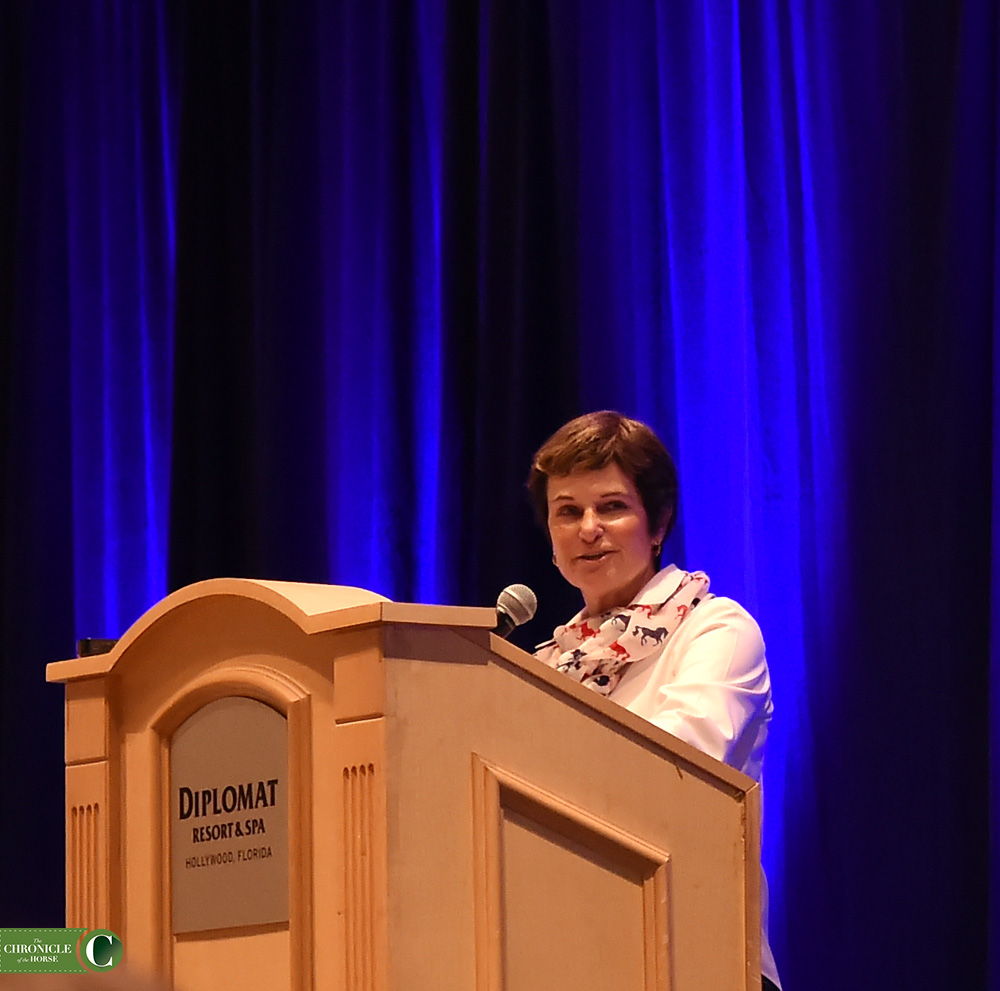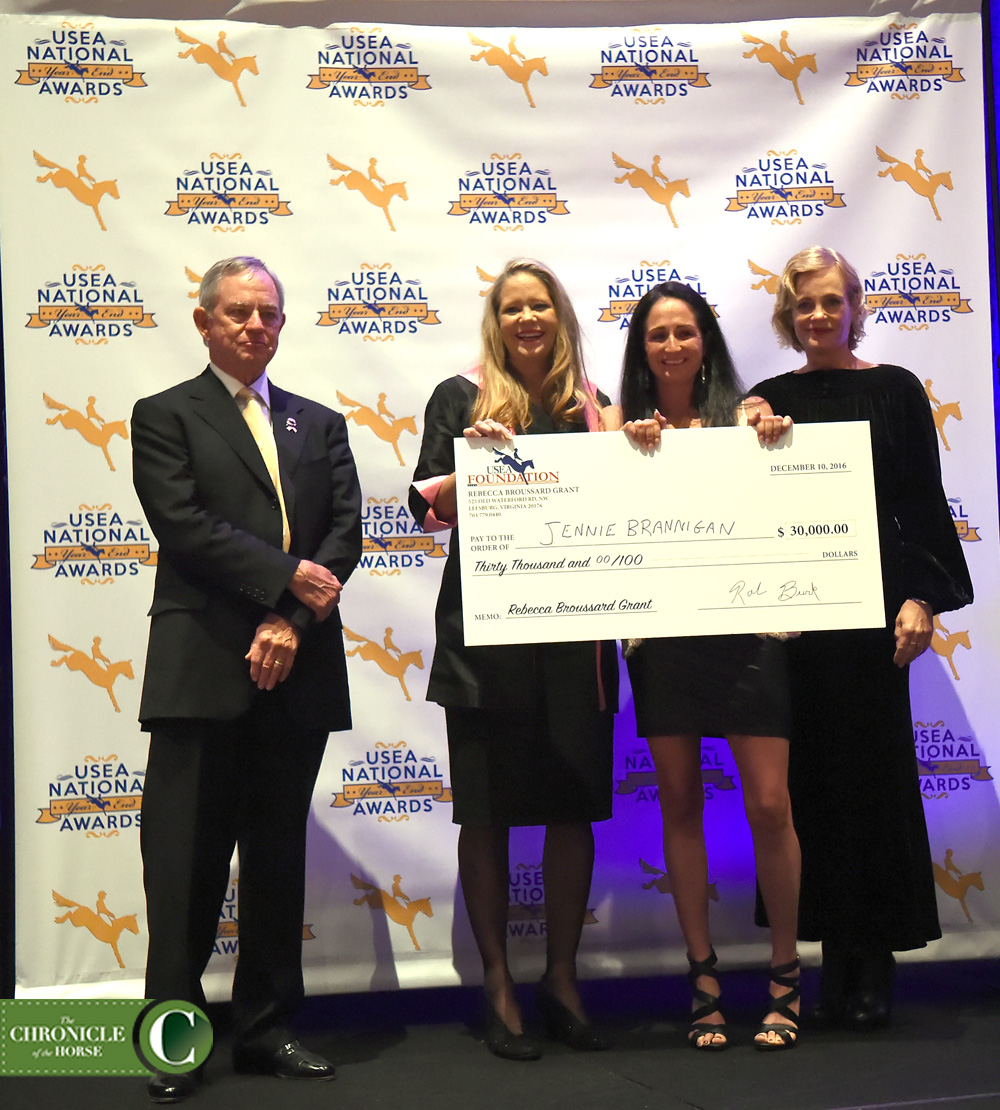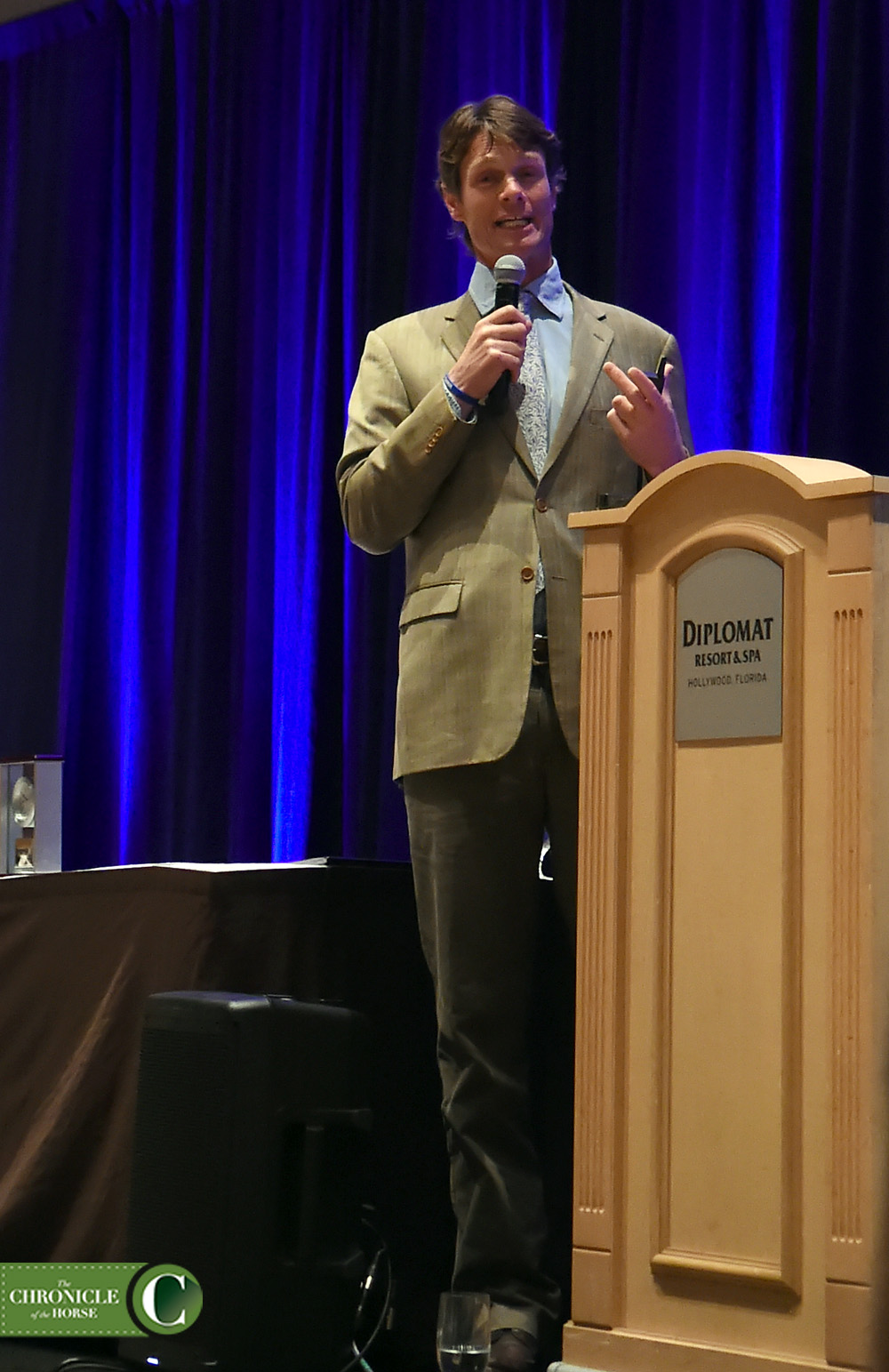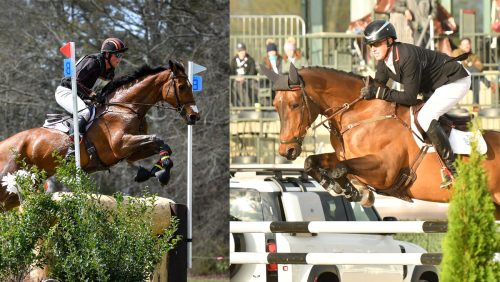Hollywood, Fla.—Dec. 11
With no contentious rule changes or hugely hot topics up for discussion, the U.S Eventing Association’s Annual Meeting and Convention, held at the Diplomat Resort and Spa, had a more mellow tone this year, but a new president and a focus on the amateur rider still meant there was plenty of excitement in the air.
Members bid farewell to Diane Pitts, who’s at the end of her three-year term as President, and said hello to her successor Carol Kozlowski.
“I’ve worn a lot of hats in this organization and this sport, and I’m very happy to bring all those hats to be position now. I feel a connection with amateurs; with everyone involved,” she said. “One of the concerns has been that the membership doesn’t have a voice. There’s always ‘the powers that be.’ There are ‘no powers that be.’ You are the powers that be. The membership is at the top of the pyramid. The membership goes to the Board of Governors and from that goes to staff, and it trickles down to the actual cogs and gears of the organization.

The Diplomet Resort hosted the USEA Convention. Photo by Lindsay Berreth.
“We serve to make your participation in this sport meaningful and safe and enjoyable. If we can all balance the budget, then so much better, but at the end of the day it’s so much about you and your horses. We all know that 80 percent of our membership competes at training level and below, and the vast majority are amateur riders,” she continued.
In her speech to the crowd at the Annual Meeting and Luncheon on Saturday, Kozlowski said that Pitts has been nothing but kind and made her path forward smooth.
“Her commitment to keeping us all on solid ground has been an inspiration to all of us. Now I’m going to take a deep breath and make every effort to be worthy of the trust that you’ve given me to day,” she said.
The first ever amateur open forum was held on Friday where several speakers brought up topics of interest to amateur riders.
One major topic was that of open divisions versus amateur divisions. In certain areas, amateur divisions are not offered frequently, which can be disheartening to some riders who would prefer not to compete with Olympic level riders.
“That is something you need to make known to your local events. It is not a blanket, one-size-fits-all answer to that question. It’s really rather regionalized, and I realize that sounds kind of evasive, but it’s true,” said Kozlowski. “Some amateur riders want to be competing with their peers. If you want them you’ve got to make your voice heard, because open divisions at competitions are the easiest to manage.”

Carol Kozlowski took over as President of the USEA. Photo by Lindsay Berreth.
Louise Leslie, who’s competed to advanced as an amateur in Area VII, said that she didn’t mind riding in open divisions, but, “for amateurs since there’s no way for us to monetize how well we do at a show, that ribbon becomes more and more important.”
ADVERTISEMENT
She suggested fancier, more memorable ribbons and Kozlowski suggested riders offer to help their local organizers design and facilitate nicer ribbons.
“The main thing I hear is that people who consider eventing their sport is that they like competing in the open divisions because it is a good mark to see, ‘this is how I’m really challenging myself and how well I’m doing.’ But if you look at it from the perspective of the amateur that is a hobbyist, they like competing against like people. I think it’s really important that we allow the choice for the amateur division to those hobbyists,” Leslie added.
Organizers have options to host rider divisions too, which can be helpful to amateurs, but could also include professionals who haven’t ridden above that level or people who don’t fit the amateur rule under the U.S. Equestrian Federation.
Janet Gunn, an amateur rider from Area II, said she likes seeing rider divisions. “To my mind, the advantage of the rider divisions are for the people who are amateurs at heart, who ride at the lower levels, who eventing horses is how the spend their money, not how they make their money.”
Other topics included riding the right horse for the level, show jumping warm up procedures and the importance of having access to Instructor Certification Program-certified instructors before considering a move up.
Members had another opportunity to voice their opinions in the Let’s Talk meeting on Friday, moderated by Peter Gray.
Audience members and a panel of experts like David O’Connor, Tamie Smith, Derek Di Grazia and Cindy Deporter discussed issues pertaining to course designers, officials, riders and organizers. The topics that came up ranged from the technicality of lower level courses to respect between everyone to a more uniform way to rate cross-country courses in the omnibus other than “moderate difficulty” or “suitable for horses with experience at the level.”

Jennie Brannigan won the “Big Becky” grant and the Connaught Grant. Photo by Lindsay Berreth.
While Phillip Dutton’s individual bronze medal at the 2016 Olympic Games in Brazil was a huge boost to the United States Eventing Team and to the morale for eventers of every level in the country, the disappointment of not finishing a team still looms over the high performance program and will have an effect going forward.
As the convention was getting underway this week, the USEF announced that David O’Connor would be scaling back his work as a coach and would transition back into the technical advisor role he was originally hired for, allowing riders more personalized training with their own coaches closer to home.
“It was a huge disappointment to the country, it was a huge disappointment to us that have put in the time and effort into it. That day didn’t work out, but I don’t believe the program is broken, that’s the important part. I think the program is actually working and has a way forward by showing an international presence and that we have players in the top five fairly consistently wherever we go. I think that’s one part of the program,” he said in the first of three high performance meetings.
“But in the review of this, coming after an emotional letdown, an honest letdown, going through that becomes soul searching, it becomes heart rending, and the review process becomes very important,” he continued. “That review process has taken a long time—almost three and a half months of getting riders input, people that were there’s input, the program’s input, to try to make a plan to go forward. One of the plans going forward was rewriting the job description of how somebody like me stands.”
Because of the lengthy review process, O’Connor and the USEF Eventing Committee couldn’t offer any insight yet as to how funds will be allotted next year, which overseas competitions will be targeted or how the training lists will be structured, but O’Connor did say that the idea of sending riders abroad will probably shift to target events rather than going for experience, but he did note the importance of the developing athletes pipeline.
There’s also a plan to change the nomenclature of the training lists to categorize horse and rider combinations, such as the current “world class” at the top of the order, then perhaps “developing” or other terms.
ADVERTISEMENT
O’Connor noted the importance of the FEI World Equestrian Games, to be held on home soil at the Tryon International Equestrian Center (N.C.) and the Olympic format, which will have effects on the sport that aren’t known yet.
“It’s going to have an effect on philosophy, the outcome, dressage and show jumping. It is going to be something that needs to be thought through very carefully. Every [equestrian] sport is going though the same thing,” he said.

William Fox-Pitt entertained the crowd during the Annual Meeting and Luncheon. Photo by Lindsay Berreth.
Tidbits
– William Fox-Pitt kept the crowd entertained during the Annual Meeting and Luncheon, explaining his emotional and physical recovery from a severe head injury he incurred in a fall in 2015.
He then went through a slideshow of his most memorable mounts from the very beginning of his career, noting that Tamarillo was his “horse of a lifetime,” and how his 2016 Olympic partner Chilli Morning helped him regain his confidence and skills as he began to ride again after his fall.
– 368 members attended the Convention.
-There are a few new and exciting ideas for safety in the sport. Irish four-star rider Sam Watson and his business partner Diarm Byrne presented their Equiratings system, which uses statistics to track rider performance at the top level. Their newest venture has been to create the Equiratings Index to rate riders in Ireland, which has led to a decrease in falls at the two-star level this year. Kozlowski called what they’ve created “kind of mind blowing,” and the Board of Governors decided to request a full proposal to see if it could be used in the future.
Danny Warrington presented Landsafe, a system he’s created with his wife Keli, who’s a gymnast, and business partner Lindsay Nylund, a former Australian Olympic gymnast.
They demonstrated their program of teaching riders to fall as safely as possible, which includes starting riders to tumble on mats first, then off of an equine simulator. Danny hopes to begin teaching clinics in the new year.
– Jennie Brannigan was the biggest winner of the night on Saturday during the Year-End Awards dinner. She took home the $25,000 Connaught Grant to the horse showing international potential at the two-star level with her own and Elsbeth Battel’s Stella Artois, and she took home the $30,000 Rebecca Broussard International Developing Rider Grant
– Pitts stated that 2016 was a good year for the organization. The USEA had an increase in members, starters and competitions this year.
– The Volunteer Incentive Program is moving full steam ahead, and an app for organizers was tested this year in Area II. Developer Nicolas Hinze and Gina Cindric, the volunteer coordinator for the Maryland Horse Trials, gave a presentation on how to use it to track hours, assign jobs and generate a leader board. Sunsprite Warmbloods has stepped in to make it available to all organizers for free in 2017.
Check out the Dec. 26 print edition of the Chronicle for much more from the USEA Annual Meeting and Convention, including rule change proposals, new rules to know, advice from William Fox-Pitt, innovations in safety and more award winners.














